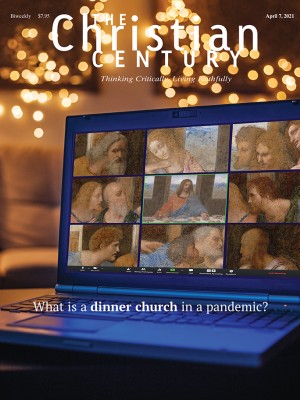April 25, Easter 4B (John 10:11-18)
When I was newly pregnant with my daughter, I thought of myself as the hired hand, her temporary guardian.
I learned about the Catechesis of the Good Shepherd from a woman in a magazine who said she knew four-year-olds who had a deeper prayer life than she did. I didn’t have kids at the time, but as one who, despite my best efforts, has been unable to recapture the spiritual confidence of my early childhood, that line caught my attention. The program, or “experience,” is rooted in the parable of the Good Shepherd, in part because the idea of Jesus as the protective shepherd who knows his sheep and will never leave them is easily grasped and appeals to young children. Or something like that. I didn’t save the article, but I never forgot about CGS.
Later, newly pregnant and on retreat at the Abbey of Gethsemani in Kentucky (best efforts, remember?), I found a copy of The Religious Potential of the Child by Sofia Cavalletti, which describes her experience developing CGS. In my weekend monk’s cell, where I was supposed to be praying, I instead dreamed of taking my unborn child to a CGS “atrium,” a “dwelling place” designed to meet the spiritual needs of children. I made notes in my journal about the child in my womb and her spiritual potential.
Read our latest issue or browse back issues.
I wonder now why the idea so excited me. More than creating a savant saint, I think I wanted to protect my daughter. This is why the Good Shepherd appealed to me: unlike the hired hand, he stands guard at the gate. He will not allow his sheep to be snatched or scattered. I thought of myself as the hired hand, her temporary guardian. My mother had died young and I expected to do the same, leaving my children as defenseless as I’d felt. I also worried that I didn’t have the fortitude to parent. I wanted a backup plan.
But by the time my daughter was old enough to enroll in a CGS atrium, I couldn’t find one. We lived in rural Virginia and attended a tiny parish with a mostly retired congregation. It was a lovely church, spare and beautiful, as ideal an environment for worship and wonder as any—except that my toddler could not sit still and her endless chatter ricocheted around the sanctuary like a bullet, so we spent most of our time in the narthex. There she paced the stone floors and babbled happily while I read and reread the various pamphlets on the literature racks until it was time to line up for communion.
Convinced I was wasting the formative years of her spiritual development, I asked the church if I could start my own atrium. To my enduring surprise, the pastor’s assistant gave me a key to an unused classroom. I enrolled in a training program and began to prepare the space.
Like most Montessori-inspired spaces, a CGS atrium is meant to be beautiful and to attract children with well-made, all-natural materials. Somehow these materials should also be made by the catechists themselves. I tried my best. I painted the walls and hung curtains and assembled the materials, the centerpiece of which was a wooden sheepfold complete with a set of sheep and the Good Shepherd in his little white tunic.
I wish I had a photo to share of the monstrosity I created—the paint-smeared face of the poor mangled shepherd, the wobbly fence posts barely held together by twine, the splintered wooden figures I called “sheep.” I brought this before the few trusting children whose parents enrolled them in my makeshift atrium because they thought our church finally had a nursery.
In John 10, Jesus says unequivocally, “I am the Good Shepherd.” In CGS, the adult never tells the children who the Good Shepherd is; they are invited to work with the materials and wonder about who the sheep and the shepherd might be. Eventually they should have an epiphanic moment when the truth dawns that the shepherd is Christ. But I wasn’t sure these kids even knew my shepherd was a shepherd. They assiduously avoided the derelict sheepfold and spent their prayer time at the “practical life” table dumping beans from one cup to another or at the prayer table asking me to light the candles so they could blow them out again. And again.
I didn’t witness any breakthroughs like the books and training foretold. Most of our sessions ended with my daughter crying and trying to escape the space I’d so carefully prepared. Like a wayward sheep, she didn’t appreciate being confined, and the hired hand couldn’t chase her—I was in charge, and the other sheep knew where I kept the matches.
My daughter is 15 now, and I can finally look back on this episode without cringing at my obvious errors. First of all, one isn’t supposed to start an atrium alone. But I also didn’t have to micromanage my daughter’s relationship with God. These days I’m able to give them both more room, to trust that God knows her and guards her and to pray that she will one day recognize that it is God who guides her days.
But unspooling this metaphor, I see a truth revealed in my own life. I was never left to the wolves either, though it may have felt like it. God always seemed to know what I needed and where I should be, just as Jesus says the Good Shepherd does.
I don’t wish those moments for my kids—those times when I have suddenly realized God is there, that God has rescued me. I have them more and more as I grow older, much older now than my mother grew to be. But maybe I can teach them to recognize Jesus, if not in front of a botched homemade sheepfold, then in some other place where they will for a moment see with clear eyes and think, Oh. Oh! I know who it is!







